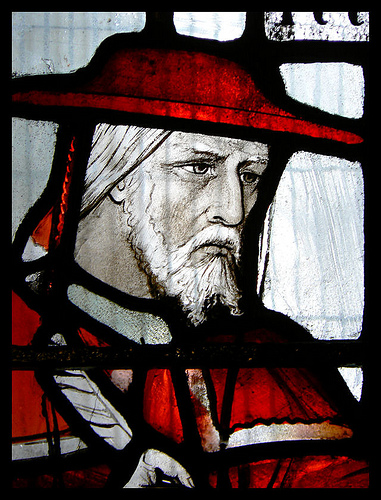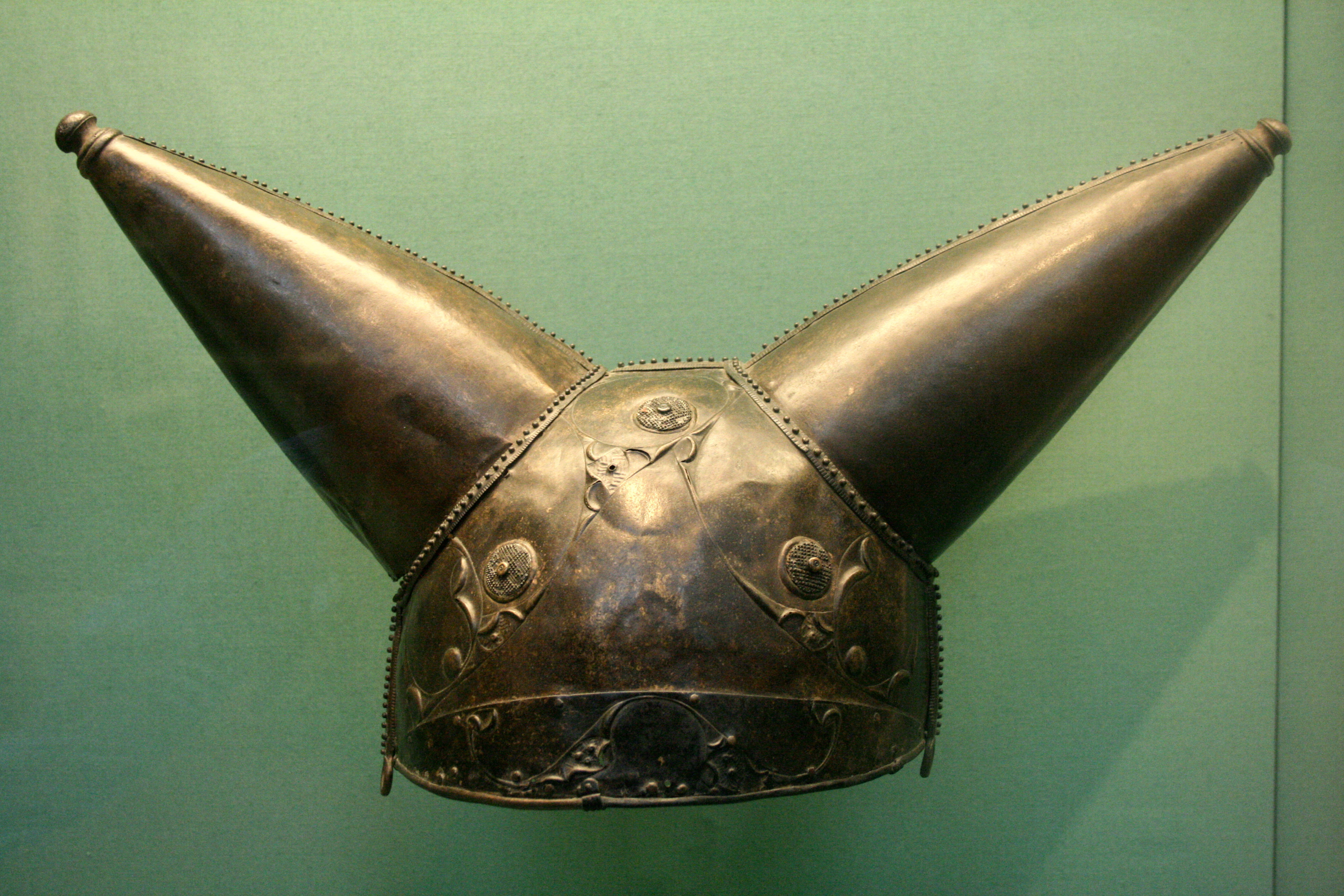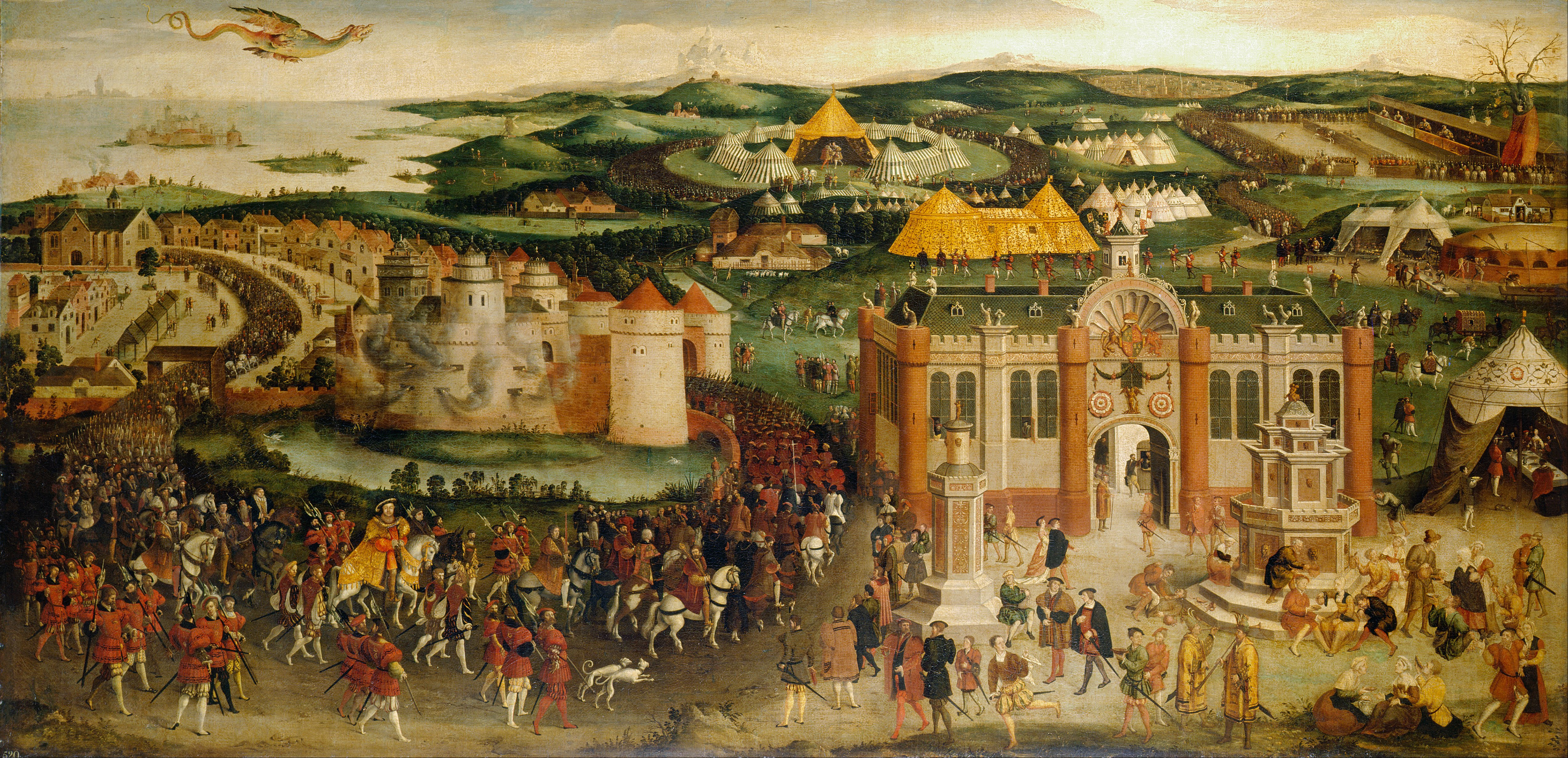|
John Taylor (Master Of The Rolls)
John Taylor (c. 1480 – 1534) was Master of the Rolls of the Court of Chancery from 1527 to 1534, following a successful career as a priest and civil servant. Taylor would have been notable just for the circumstances of his birth: he was the firstborn of healthy triplets who all survived to adulthood, which was virtually unheard of in the 15th century. He was awarded doctor of decrees and of the sacred canons beyond sea at the University of Cambridge in 1520; and incorporated at Oxford in 1552. King Henry VII met John and his brothers Rowland and Nathaniel in their childhood and undertook responsibility to educate the three boys if they came to manhood; this informal act and others like it later inspired Queen Victoria's Royal Bounty for Triplets, which continued until the reign of Elizabeth II. There is note in the Royal Privy Purse expenses of 1498 "for the wages of the King’s Scoler John Taillor at Oxenford." During his lifetime, Taylor donated money towards the buildin ... [...More Info...] [...Related Items...] OR: [Wikipedia] [Google] [Baidu] |
Master Of The Rolls
The Keeper or Master of the Rolls and Records of the Chancery of England, known as the Master of the Rolls, is the President of the Court of Appeal (England and Wales)#Civil Division, Civil Division of the Court of Appeal of England and Wales and Head of Civil Justice. As a judge, the Master of the Rolls is second in seniority in England and Wales only to the Lord Chief Justice. The position dates from at least 1286, although it is believed that the office probably existed earlier than that. The Master of the Rolls was initially a clerk responsible for keeping the "Rolls" or records of the Court of Chancery, and was known as the Keeper of the Rolls of Chancery. The Keeper was the most senior of the dozen Chancery clerks, and as such occasionally acted as keeper of the Great Seal of the Realm. The post evolved into a judicial one as the Court of Chancery did; the first reference to judicial duties dates from 1520. With the Judicature Act 1873, which merged the Court of Chancery ... [...More Info...] [...Related Items...] OR: [Wikipedia] [Google] [Baidu] |
Hatfield, Hertfordshire
Hatfield is a town and civil parish in Hertfordshire, England, in the borough of Welwyn Hatfield. It had a population of 29,616 in 2001, 39,201 at the 2011 census, and 41,265 at the 2021 census. The settlement is of Saxon origin. Hatfield House, home of the Marquess of Salisbury, forms the nucleus of the old town. From the 1930s when de Havilland opened a factory, until the 1990s when British Aerospace closed it, aircraft design and manufacture employed more people there than any other industry. Hatfield was one of the post-war New Towns Act 1946, New Towns built around London and has much International Style (architecture), modernist architecture from the period. The University of Hertfordshire is based there. Hatfield lies north of London beside the A1(M) motorway and has direct trains to London King's Cross railway station, London St Pancras railway station, Finsbury Park station, Finsbury Park and Moorgate station, Moorgate. There has been a strong increase in commuters who ... [...More Info...] [...Related Items...] OR: [Wikipedia] [Google] [Baidu] |
1480s Births
148 may refer to: *148 (number), a natural number *AD 148, a year in the 2nd century AD *148 BC, a year in the 2nd century BC *148 (album), an album by C418 *148 (Meiktila) Battery Royal Artillery, a specialist Naval Gunfire Support Forward Observation unit within 29 Commando Regiment Royal Artillery of 3 Commando Brigade Royal Marines *148 (New Jersey bus), a New Jersey Transit bus route *148 Gallia, a main-belt asteroid *Tatra 148, a heavy truck *Fiat 148 The Fiat 147 was a three-door hatchback subcompact car produced by Fiat in the Brazilian state of Minas Gerais from autumn 1976 until 1987, when it was replaced by the Fiat Uno. It was the Brazilian variant of the Fiat 127. Some were also buil ..., a supermini car See also * List of highways numbered 148 * {{Number disambiguation ... [...More Info...] [...Related Items...] OR: [Wikipedia] [Google] [Baidu] |
City Of London
The City of London, also known as ''the City'', is a Ceremonial counties of England, ceremonial county and Districts of England, local government district with City status in the United Kingdom, city status in England. It is the Old town, historic centre of London, though it forms only a small part of the larger Greater London metropolis. The City of London had a population of 8,583 at the 2021 United Kingdom census, 2021 census, however over 500,000 people were employed in the area as of 2019. It has an area of , the source of the nickname ''the Square Mile''. The City is a unique local authority area governed by the City of London Corporation, which is led by the Lord Mayor of London, Lord Mayor of the City of London. Together with Canary Wharf and the West End of London, West End, the City of London forms the primary central business district of London, which is one of the leading financial centres of the world. The Bank of England and the London Stock Exchange are both ba ... [...More Info...] [...Related Items...] OR: [Wikipedia] [Google] [Baidu] |
John Stow
John Stow (''also'' Stowe; 1524/25 – 5 April 1605) was an English historian and antiquarian. He wrote a series of chronicles of History of England, English history, published from 1565 onwards under such titles as ''The Summarie of Englyshe Chronicles'', ''The Chronicles of England'', and ''The Annales of England''; and also ''A Survey of London'' (1598; second edition 1603). A. L. Rowse has described him as "one of the best historians of that age; indefatigable in the trouble he took, thorough and conscientious, accurate – above all things devoted to truth". Life John Stow was born in about 1525 in the City of London parish of St Michael, Cornhill, then at the heart of London's metropolis. His father, Thomas Stow, was a Worshipful Company of Tallow Chandlers, tallow chandler. Thomas Stow is recorded as paying rent of 6s 8d per year for the family dwelling, and as a youth Stow would fetch milk every morning from a farm on the land nearby to the east owned by the Poor Clares, ... [...More Info...] [...Related Items...] OR: [Wikipedia] [Google] [Baidu] |
Lord Chief Justice
The Lord or Lady Chief Justice of England and Wales is the head of the judiciary of England and Wales and the president of the courts of England and Wales. Until 2005 the lord chief justice was the second-most senior judge of the English and Welsh courts, surpassed by the lord chancellor, who normally sat in the highest court. The Constitutional Reform Act 2005 changed the roles of judges, creating the position of President of the Supreme Court of the United Kingdom and altering the duties of the lord chief justice and the lord chancellor. The lord chief justice ordinarily serves as president of the Criminal Division of the Court of Appeal and head of criminal justice, meaning its technical processes within the legal domain, but under the 2005 Act can appoint another judge to these positions. The lord chancellor became a purely executive office, with no judicial role. The equivalent in Scotland is the Lord President of the Court of Session, who also holds the post of Lor ... [...More Info...] [...Related Items...] OR: [Wikipedia] [Google] [Baidu] |
Lord Chancellor
The Lord Chancellor, formally titled Lord High Chancellor of Great Britain, is a senior minister of the Crown within the Government of the United Kingdom. The lord chancellor is the minister of justice for England and Wales and the highest-ranking Great Officers of State (United Kingdom), Great Officer of State in Scotland and England, nominally outranking the Prime Minister of the United Kingdom, prime minister. The lord chancellor is appointed and dismissed by the British monarchy, sovereign on the advice of the prime minister. Prior to the Acts of Union 1707, union of England and Scotland into the Kingdom of Great Britain, there were separate lord chancellors for the Kingdom of England (including Wales) and the Kingdom of Scotland. Likewise, the Lordship of Ireland and its successor states (the Kingdom of Ireland and History of Ireland (1801–1923), United Kingdom of Great Britain and Ireland) maintained the office of Lord Chancellor of Ireland, lord chancellor of Ireland u ... [...More Info...] [...Related Items...] OR: [Wikipedia] [Google] [Baidu] |
Halifax, West Yorkshire
Halifax is a town in the Metropolitan Borough of Calderdale, in West Yorkshire, England. It is in the eastern foothills of the Pennines. In the 15th century, the town became an economic hub of the old West Riding of Yorkshire, primarily in woollen manufacture with the large Piece Hall square later built for trading wool in the town centre. The town was a thriving mill town during the Industrial Revolution with the Dean Clough Mill buildings a surviving landmark. In 2021, it had a population of 88,109. It is also the administrative centre of the wider Calderdale Metropolitan Borough. Toponymy The town's name was recorded in about 1091 as ''Halyfax'', most likely from the Old English ''halh-gefeaxe'', meaning "area of coarse grass in the of land". This explanation is generally preferred to derivations from the Old English ' (holy), in ''hālig feax'' or "holy hair", proposed by 16th-century antiquarians. The probably-incorrect interpretation gave rise to two legends. One concern ... [...More Info...] [...Related Items...] OR: [Wikipedia] [Google] [Baidu] |
Field Of The Cloth Of Gold
The Field of the Cloth of Gold (, ) was a summit meeting between King Henry VIII of England and King Francis I of France from 7 to 24 June 1520. Held at Balinghem, between Ardres in France and Guînes in the English Pale of Calais, it was an opulent display of wealth by both kings. The summit was arranged to increase the bond of friendship between the two kings following the Anglo-French treaty of 1514. The two monarchs would meet again in 1532 to arrange Francis's assistance in pressuring Pope Clement VII to pronounce Henry's first marriage as illegitimate. Under the guidance of English Cardinal Thomas Wolsey, these European states sought to outlaw war forever among Christian peoples. The Pale of Calais, home to the meeting in Balinghem, was the final English possession in France. This territorial leftover from the Hundred Years' War caused some tensions between the English and French, as the latter preferred a location closer to the border, but topographical considerati ... [...More Info...] [...Related Items...] OR: [Wikipedia] [Google] [Baidu] |
Archdeacon Of Buckingham
The Archdeacon of Buckingham is the senior ecclesiastical officer in charge of the Church of England in Buckinghamshire. The archdeacon has statutory oversight over the ancient Archdeaconry of Buckingham, which has existed since (at latest) the 11th century and was, until 1837, in the Diocese of Lincoln. On 18 August 1837, an Order in Council transferred the archdeaconry to the Diocese of Oxford The Diocese of Oxford is a Church of England diocese that forms part of the Province of Canterbury. The diocese is led by the Bishop of Oxford (currently Steven Croft (bishop), Steven Croft), and the bishop's seat is at Christ Church Cathedral, .... The archdeacon has some disciplinary supervision and pastoral care of the clergy in the archdeaconry. List of archdeacons References SourcesGenUKI – early Archdeacons of Sutton-cum-Buckingham* * * * * {{DEFAULTSORT:Buckingham, Archdeacon of Lists of Anglicans ... [...More Info...] [...Related Items...] OR: [Wikipedia] [Google] [Baidu] |
Archdeacon Of Derby
The three Archdeacons in the Diocese of Derby are senior ecclesiastical officers in the Church of England Diocese of Derby. Each archdeacon has responsibility for church buildings and clergy discipline in her/his respective archdeaconry. History The first mentions of an archdeacon in the area occurred in the twelfth century – around the time when archdeacons' posts were first being created across England. From that earliest point until the Victorian reorganisations of church structures, the ''Archdeaconry of Derby'' was in the Diocese of Lichfield (which during those seven centuries was called in turn Coventry, Coventry & Lichfield, Lichfield & Coventry, and Lichfield). The archdeaconry, at that point covering the whole county of Derby, was transferred by Order in Council to the new Diocese of Southwell on 5 February 1884 and then split on 18 October 1910 — creating the ''Archdeaconry of Chesterfield'' — such that at its 2022 dissolution, Derby archdeaconry ... [...More Info...] [...Related Items...] OR: [Wikipedia] [Google] [Baidu] |
Clerk Of The Parliaments
The Clerk of the Parliaments is the chief clerk of the House of Lords in the Parliament of the United Kingdom. The position has existed since at least 1315, and duties include preparing the minutes of Lords proceedings, advising on proper parliamentary procedure and pronouncing royal assent. Many of the Clerk's duties are now fulfilled by his deputies and the Clerk of the Parliaments' Office. The ''Under Clerk of the Parliaments'' is the formal name for the Clerk of the House of Commons. The term ''Clerk of the Parliaments'' is also used as a formal alternative title by the Clerk of the Senate of Canada and the Clerks of the Legislative Councils of New South Wales and Western Australia. In the Australian state of Victoria the title is given to the longer-serving of the Clerks of the Legislative Council and Legislative Assembly. The title was also formerly used for the Clerk of the Australian Senate and the longer-serving of the Clerks of the Legislative Council and Legisla ... [...More Info...] [...Related Items...] OR: [Wikipedia] [Google] [Baidu] |





